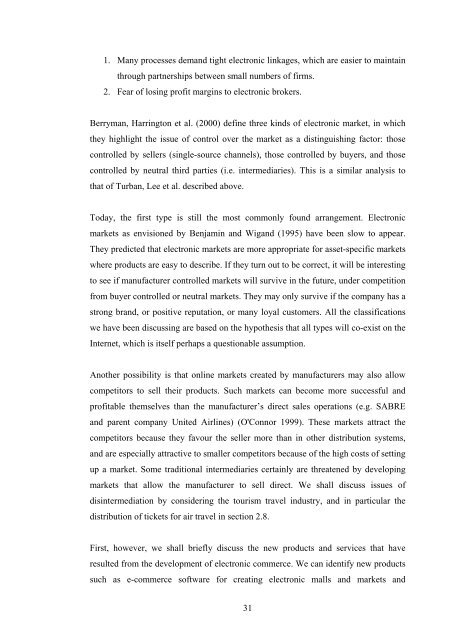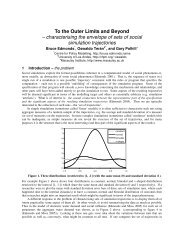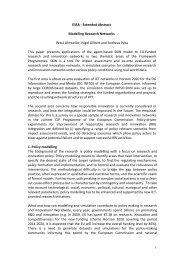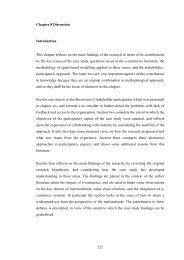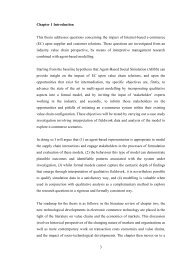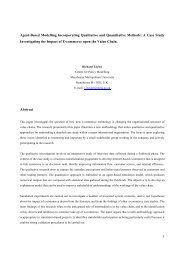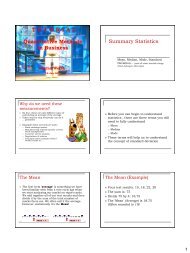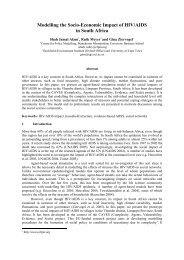7 Chapter 2 Literature Review: Markets, Intermediation and E ...
7 Chapter 2 Literature Review: Markets, Intermediation and E ...
7 Chapter 2 Literature Review: Markets, Intermediation and E ...
You also want an ePaper? Increase the reach of your titles
YUMPU automatically turns print PDFs into web optimized ePapers that Google loves.
1. Many processes dem<strong>and</strong> tight electronic linkages, which are easier to maintain<br />
through partnerships between small numbers of firms.<br />
2. Fear of losing profit margins to electronic brokers.<br />
Berryman, Harrington et al. (2000) define three kinds of electronic market, in which<br />
they highlight the issue of control over the market as a distinguishing factor: those<br />
controlled by sellers (single-source channels), those controlled by buyers, <strong>and</strong> those<br />
controlled by neutral third parties (i.e. intermediaries). This is a similar analysis to<br />
that of Turban, Lee et al. described above.<br />
Today, the first type is still the most commonly found arrangement. Electronic<br />
markets as envisioned by Benjamin <strong>and</strong> Wig<strong>and</strong> (1995) have been slow to appear.<br />
They predicted that electronic markets are more appropriate for asset-specific markets<br />
where products are easy to describe. If they turn out to be correct, it will be interesting<br />
to see if manufacturer controlled markets will survive in the future, under competition<br />
from buyer controlled or neutral markets. They may only survive if the company has a<br />
strong br<strong>and</strong>, or positive reputation, or many loyal customers. All the classifications<br />
we have been discussing are based on the hypothesis that all types will co-exist on the<br />
Internet, which is itself perhaps a questionable assumption.<br />
Another possibility is that online markets created by manufacturers may also allow<br />
competitors to sell their products. Such markets can become more successful <strong>and</strong><br />
profitable themselves than the manufacturer’s direct sales operations (e.g. SABRE<br />
<strong>and</strong> parent company United Airlines) (O'Connor 1999). These markets attract the<br />
competitors because they favour the seller more than in other distribution systems,<br />
<strong>and</strong> are especially attractive to smaller competitors because of the high costs of setting<br />
up a market. Some traditional intermediaries certainly are threatened by developing<br />
markets that allow the manufacturer to sell direct. We shall discuss issues of<br />
disintermediation by considering the tourism travel industry, <strong>and</strong> in particular the<br />
distribution of tickets for air travel in section 2.8.<br />
First, however, we shall briefly discuss the new products <strong>and</strong> services that have<br />
resulted from the development of electronic commerce. We can identify new products<br />
such as e-commerce software for creating electronic malls <strong>and</strong> markets <strong>and</strong><br />
31


